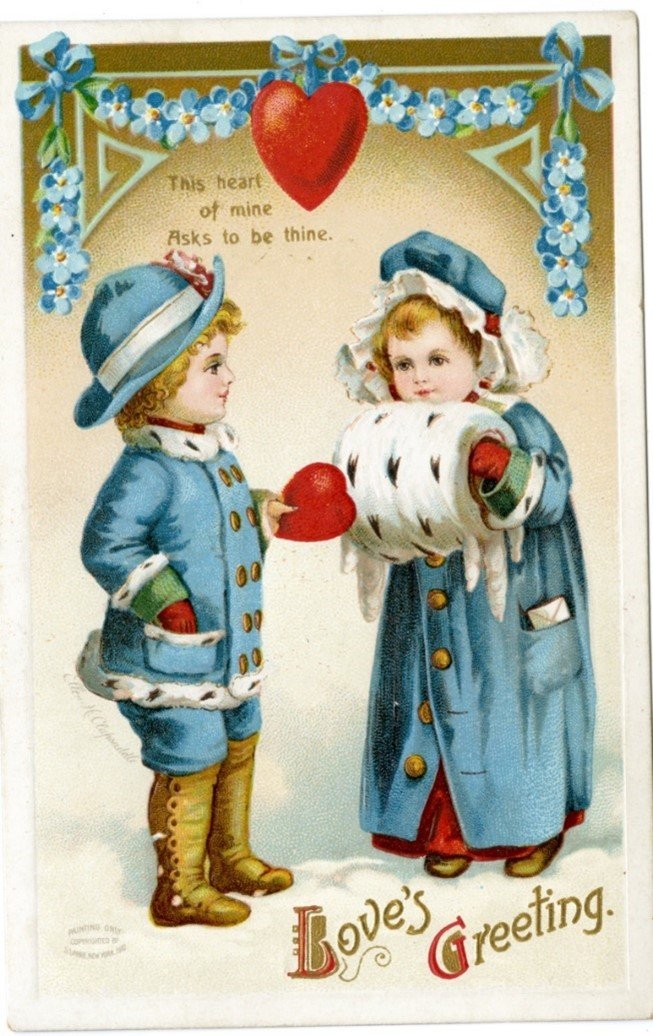With Love from the Heritage Collection: A Celebration of Valentine’s Day
Whether sending it to a friend, a family member, or a significant other, a Valentine’s Day card can be a nice way to let someone know you care about them.
The first documented evidence of Valentine’s Day being associated with romantic love appears in the latter half of the Middle Ages with Geoffrey Chaucer’s 1375 poem, “The Parliament of Fowles”. The poem references a common belief at the time that birds chose their mates in mid-February, which also inspired the use of “love birds” as a long-standing Valentine’s Day motif. Forty years later, the first written Valentine appeared: a handwritten love letter from Charles, Duke of Orleans, to his wife in which he refers to her as “My Valentine.” It wouldn’t be until several centuries later that the first printed Valentine’s Day cards would appear. The oldest known printed Valentine, dated to 1797, is currently housed in the York Castle Museum.
However, it was two things rarely associated with romance— mass manufacturing and changes to postal policy— that would cement the Valentine’s Day card as a major element of the holiday. In 1840, England began offering mail delivery anywhere in the country for one penny and allowing this cost to be pre-paid using a postage stamp. The United States implemented a similar policy a few years later. (Previously the cost of postage had to be paid by the recipient of a letter or package.) These new postage stamps and lowered costs encouraged people in both countries to send cards for holidays, including Valentine’s Day. In addition, innovations in printing, embossing, and paper lace allowed the cards to be mass produced and more elaborate than ever. Over the course of the 19th century and into the early 1900s, sending such cards became a fashionable way to celebrate the holiday. Following the 1893 Chicago World’s Fair and its popularization of postcards, a Valentine’s day postcard was a common gift for a loved one.
Here in the Minnetrista Heritage Collection, we have a variety of Valentine’s Day greeting cards from the early 20th century. From simple to very extravagant— they offer us a glance into Valentine’s Days of the past.










While postcards like those above were popular, some sent more elaborate, three-dimensional Valentines, such as this one, marked “Valentine’s Greetings from Frank E. Thornburg to Lola F. Fadley, February ‘1907’” on the back. It seems she appreciated the card, as Frank and Lola would later get married on New Year's Eve of 1908.
Others sent these “mechanical” Valentines which use honeycomb paper to create three-dimensional scenes but easily fold back into a flat card.
“To Betty from Zilpha”



